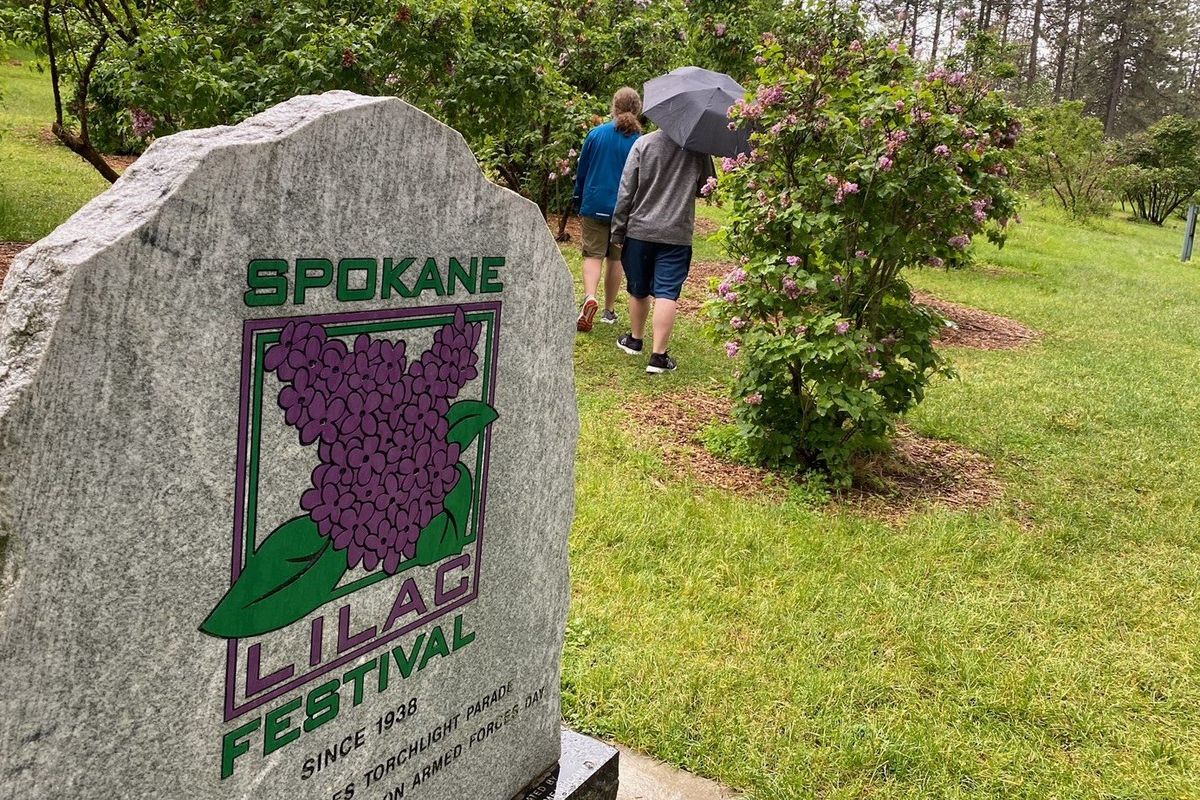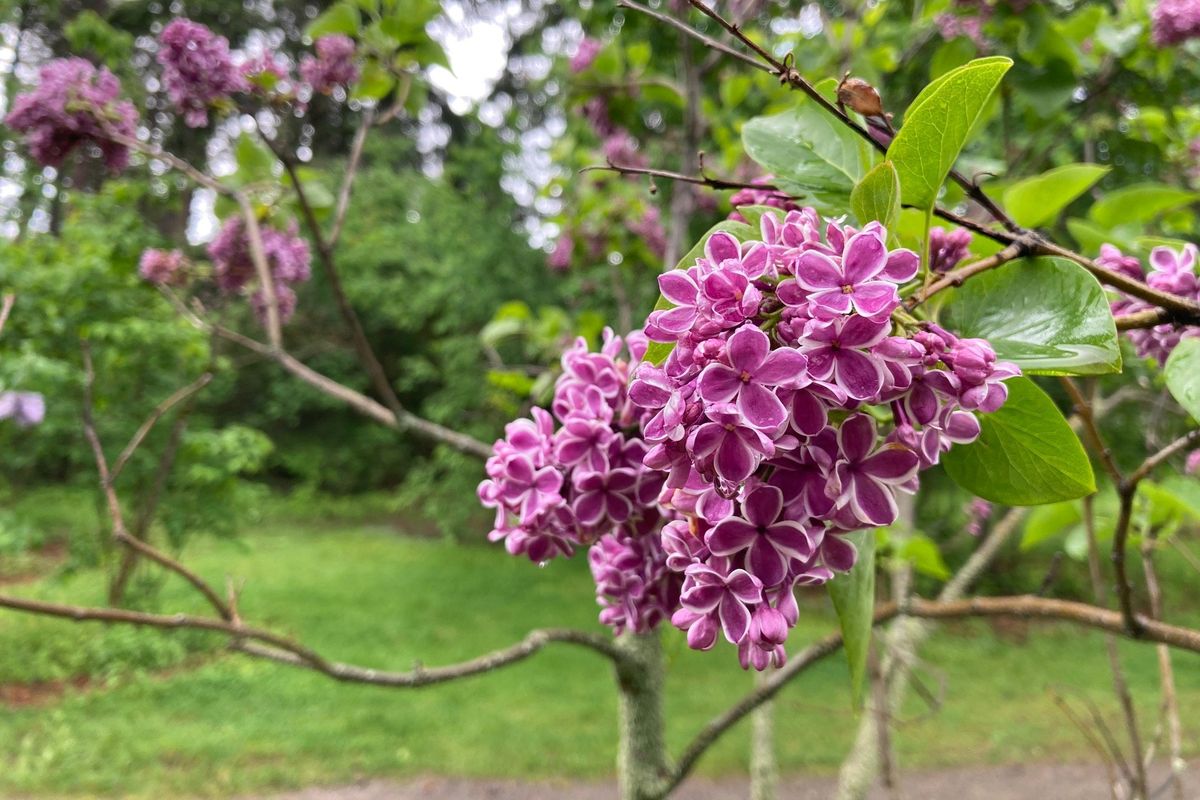What’s in a name? For Spokane, lilacs were the convergence for history and beauty
The stone monument commemorating the Spokane Lilac Festival is shown in Manito Park. (Courtesy)
From staff reports
About the middle of May each year, Spokane’s nickname blossoms in hues of purple, pink and white across the city.
Most years the sight and smell of lilacs growing in back yards, parks and empty lots where homes once stood is commonplace. The blooms are ripe for cutting and placing in a small vase to enliven any room – especially after the daffodils are finished.
But like seemingly everything else about the spring of 2022, it was a tough one for lilacs. The bushes are healthy, but many didn’t deliver that wow factor lilacs are known for delivering.
Perhaps the best-known place to see a variety of lilacs in Spokane is the Lilac Garden in Manito Park. It’s certainly the most popular as it boasts more than 100 cultivars from 23 species according to the city’s Parks Department, making it notable in the Western United States.
And it’s where the Lilac Festival placed a stone marker to commemorate the city’s biggest and best parade.
But calling Spokane the “Lilac City” didn’t happen until the early years of the Great Depression – decades after lilacs took root here.
Pat Munts, who spent her life working in the dirt, including a long stint as a small farms specialist with Washington State University’s Extension Service, and years of writing a gardening column for The Spokesman-Review, said the earliest white people moving to the area were determined to “settle” the area and “beautify” it with something familiar.
And what better to aid these efforts than lilacs, the “Queen of Shrubs.”
The first lilacs arrived in Spokane and the Inland Northwest in the late 1800s, though the first “official” recording of lilacs being planted was in the Browne’s Addition in 1906, according to Spokane Historical Society.
This account includes the procurement by John Duncan of 128 cultivars from Rochester New York in 1912.
The people chose wisely for their endeavors to bring a bit of East Coast nostalgia and beauty to a rugged landscape where the work – farming, logging, mining and railroading – was tough.
“In retrospect, it’s a good plant for this area,” Munts said. “In some ways it’s perfect.”
On the Palouse, the lilacs planted more than a century ago outlasted the original farmhouses.
“They’re still there,” Munts said. They may not have the big blooms of the well-tended lilacs in Spokane’s yards and parks, but they are healthy and resilient, many growing higher than 12 feet and just as wide.
Today there is a growing awareness and interest at looking to nature and native peoples for naming conventions. And Spokane is no different.
But “The Arrowleaf Balsamroot City” may not have the same linguistic ring to it as “The Lilac City,” but would certainly be reflective of the region’s natural beauty. The ubiquitous yellow wildflowers that dominate the forested floor are as resilient and hardy as they are beautiful, Munts said.
And like the transplanted Lilac, they are disease resistant, drought resistant and showy in May.
While Spokane adopted the name “The Lilac City,” other cities celebrate the flowering bush, including Rochester, which has held a Lilac Festival for the past 124 years, before the aforementioned Duncan arrived in Spokane with the cuttings from Upstate New York. The city has what is claims is the largest collection of lilacs in a single place – 1,200 shrubs representing more than 500 varieties.
Boston’s Arnold Arboretum also celebrates lilacs during a Sunday in May.
But the other lilac loving communities have not taken to nicknaming their cities after the English plant.
Nicknaming cities after plants isn’t all that common in the United States. Consider cities in West, for example. Seattle is “The Emerald City.” Portland is “Rip City.” Coeur d’Alene is “The Lake City.”
Butte, Mont. pays homage to its mining history as “The Richest Hill on Earth.” Denver is “The Mile High City,” and Las Vegas is “Sin City.” And Boise bills itself plainly as “The City of Trees.”
But leave it to California to have a few exceptional monikers: Forestville calls itself the “Poison Oak Capital of the World.” Garden Grove is simply “Big Strawberry.” And yes, Pasadena is “The City of Roses.”

